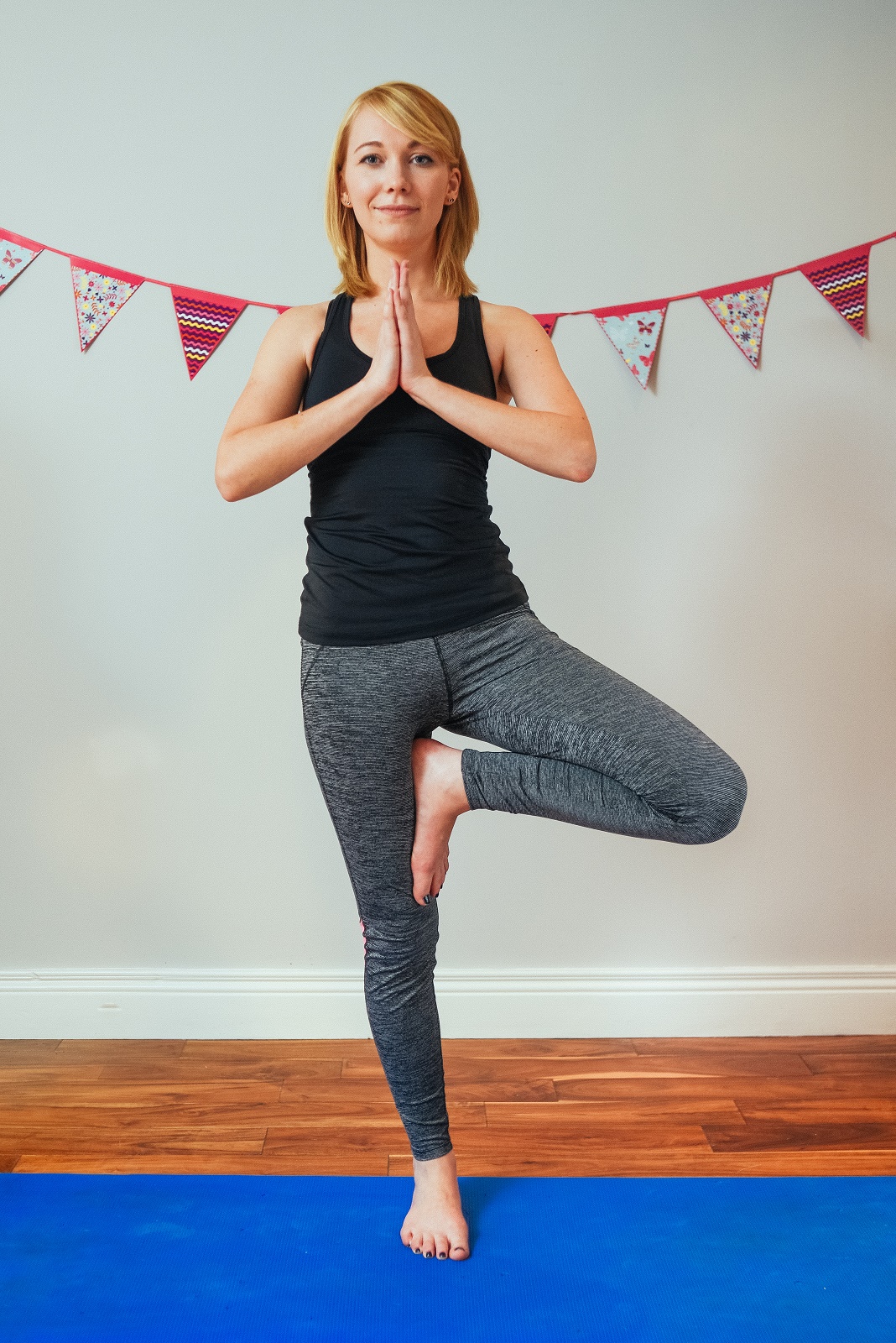I love balancing postures in yoga. The effort of maintaining the pose makes it a great chance to practice mindfulness by focusing all attention on the present moment. It’s not always such a picture perfect moment though… balancing postures can bring up frustration if we’re having an ‘off day’ or working on building strength or recovering from an injury. So here are a few simple tips to help improve your balance if you’re finding it tricky.
- Increase your surface area. Simply put, take up more space in your base. If you’re standing on one foot, spread the toes a little wider. If you’re in an arm balance, spread the fingers.
- Use your base wisely. It’s really tempting to dump your weight into the heel of the palm of your hand, or the heel/ side of your foot. If you’re balancing, use all 4 corners of your base in order to give yourself a more secure foundation.
- Root to rise. In almost every yoga pose, there are opposing actions needed to fully benefit from the pose. For example, tree pose (pictured). In this pose, you need to press down into the floor with all 4 corners of your feet, i.e. root down. At the same time, you extend your spine upwards, i.e. rise. This opposition helps to keep the body active, and the opposition can increase your balance.
- Find a visual focus point, often called a ‘drishti’. By fixing your gaze on an unmoving place in the room, you can still your mind and better focus, which helps to improve your balance.
- Remember to breathe! Often the energy in the room gets very focused in balancing postures, which is great, but if you are not breathing you will find yourself getting frustrated in the pose, so breathe deep and take it easy. If you can’t breathe in a posture, you have come too far. Ease up, or take a simpler modification.
- Take modifications. So often when I’m teaching, I’ll offer a modification and nobody will take it. If you’re building up balance, try a simpler version first. Go through the list above, and then try the full version of the posture. The more your body and mind get some practice, the more you will start to build confidence and balance in the pose.
- Focus on your practice, nobody else’s. Easier said than done though, right? Especially when you’re new to yoga, it’s so tempting to look around and compare yourself to everyone else in the room. In a balancing posture, this can cause you to lose your balance or push it further than your body wants to. Don’t get me wrong, look at the teacher or other yogis to learn from them and see how to get into a pose so we can all learn from each other. But if you find you’re forcing yourself into a pose or beating yourself up for not looking like the acrobat on the next mat, then take a breath and bring the focus back to your own mat.
- Bring a bit of lightness. Not in your body necessarily, but in your mind. Approach balancing postures with a curiosity about what it feels like and how the posture changes when you engage certain muscles. When you come at them with a lightness in your mind, it can be much easier on your body, as you aren’t holding or forcing but moving from a place of lightness and ease. Try a gentle smile in your next balancing posture. That might sound a little ‘Sesame Street’ but it works!
Try these out and see how you get on. If you have any other little hints and tips that have helped you build up balance, please share below. If you’re struggling with balance and have any questions on specific poses – ask me or any of the Yogahub teachers before / after your next class or in the comments below. Above all else, be patient with yourself and enjoy your practice!



